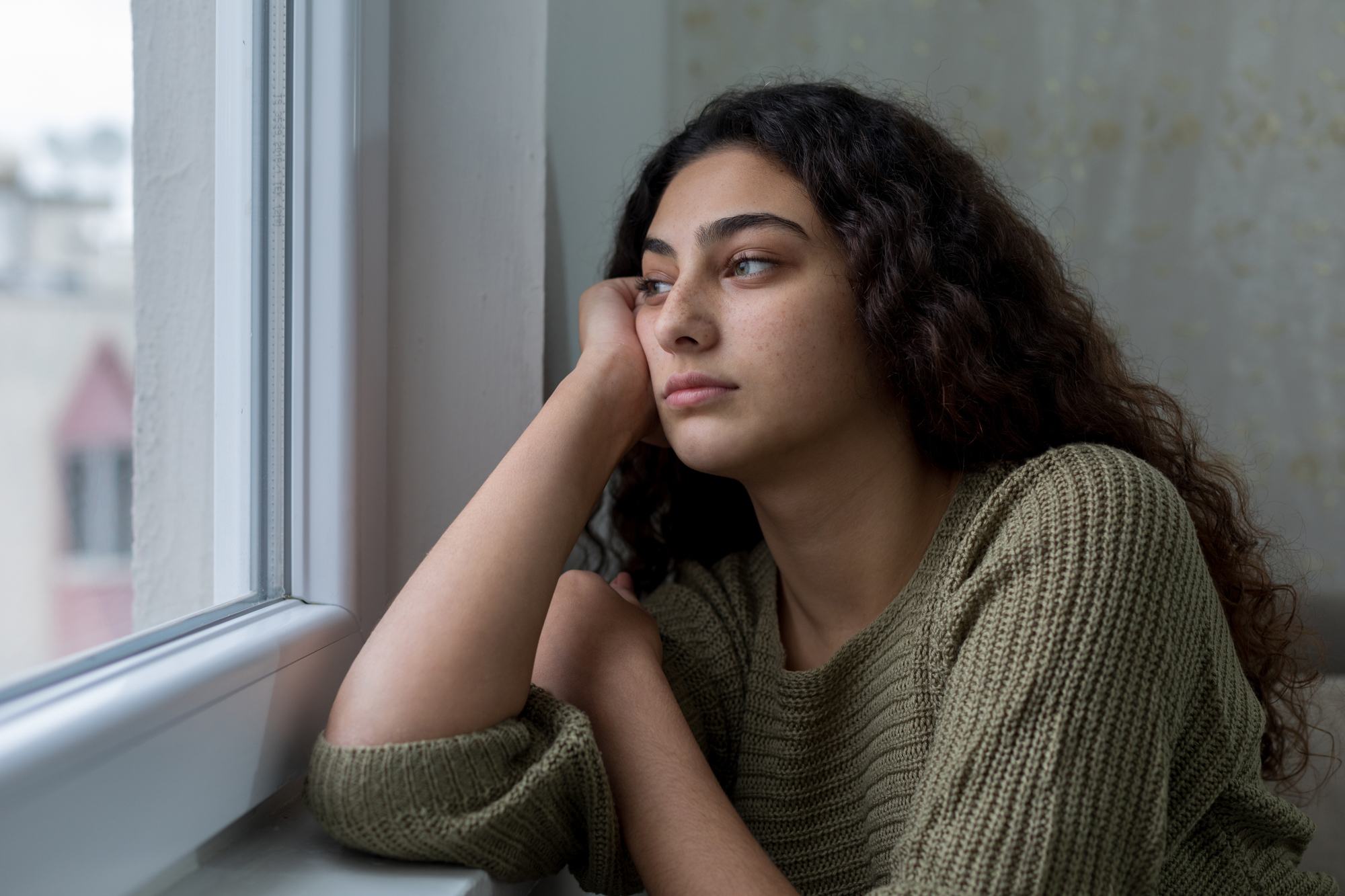COVID-19, Teen Stress, and How Educators Can Support Stress Management Today
Hear from four social workers on the changing mental health landscape for teens, how their work has changed in remote learning, and how we can support our teens better.

It’s impossible to know the lasting effects of COVID-19 on the economy and our national wellbeing. We do know that this past year has upped our collective stress. The pandemic disrupted our lives forcing people to adapt to a new world without the support they had in the old one.
Young people are especially prone to the stress caused by this drastic change. Schools closed last year isolating many young people from the support they found in their school’s social workers, counselors, and educators. More than that, students are struggling as they ponder how this disruption will affect their long-term academic trajectories.
Teen Stress Today
Given this context, it’s become clear that students are facing an unprecedented mental health crisis. They are simultaneously asked to take on more responsibilities—as caretakers, emotional supports, and breadwinners—while losing their school support networks and safe spaces. In fact, the CDC reported that young adults have experienced disproportionately worse mental health outcomes as a result of COVID-19 and its consequences.
These trends suggest that our approach to mitigating the consequences of COVID-19 must address the deteriorating mental health of today’s students. As we pivot and think about how we can create a new education system with a focus on equity and resilience, then we need to remember that the mental and emotional health of our students needs to be at the core of our work.

A First-of-its-Kind Stress Management Course for Teens
In that spirit, XQ launched a free, self-paced stress management course to help provide our young people with the tools, resources, and knowledge to manage stress in their lives—in this moment and beyond.
The learning experience consists of four sessions and supports students and educators as they navigate building new tools to live in this chaotic moment. Students who complete the course earn a digital badge.
To make sure that this learning experience meets the needs in schools today, we spoke with school social workers to discuss what they are seeing on the ground.
Read our conversation with social workers below and learn more about the effects of COVID-19 on their students, how their work has changed in the last year, and what they imagine will be the lasting mental health impacts of COVID-19.
What are the main stressors affecting young people right now? What is causing teen stress? Did COVID-19 create new stressors, or did it exacerbate normal stressors?
Anastasia Resner, Social Worker: The main stressors for young people right now include relationships, mental health (primarily depression and anxiety), substance use, and self-esteem. COVID-19 and shelter-in-place-orders have exacerbated these for many young people. Our students are stuck at home in potentially toxic environments. They may be having problems with family members or in group homes. There is such diversity in our students’ experiences.
Molly Graham, Behavioral Health Coordinator: We’ve had students report both happening. Fully remote learning is a stressor in and of itself. Teaching and learning are as social as they are academic. Some of our students rely on conversations they’d have with teachers on their way out of class, during lunch, or in passing. One of our seniors described speaking to her teachers as “more formal” which made getting help more difficult.
On top of this, students with learning disabilities are having a difficult time adjusting to new forms of accommodations. Without the physical presence of a teacher to guide them many students find themselves lost in the cacophony of communicative assistance. To a student that has challenges with executive functioning, an overflowing inbox can be a major barrier.
Additionally, the pandemic has magnified how much responsibility many high school-aged students carry at home. If parents are working and younger siblings are at home learning then the responsibility falls to the older children in the home to ensure their siblings are logged on to class and have meals throughout the day.
Many of our students have family members who contracted COVID-19 and students who have lost loved ones in this crisis. Many students want to see their friends but are fearful of exposure. We have a student who is immunocompromised and has to make regular visits to the doctor. She shared that even going to the hospital is scary and it’s the one place she should feel safe.
Grace Jones, Social Worker: This pandemic has impacted our ability to socialize. Teens, in particular, are at a developmental stage where they are more greatly influenced by their peers than adults. So, ridding them of spaces where they can socialize with peers affects their mental, emotional, and social wellbeing. Isolation also brings an additional layer of stress and can exacerbate struggles with mental health. Humans are social beings, we are programmed to live and work together. Depression, anxiety, and suicide are mental health-related concerns that have increased with isolation.
Stacy Robertson, School Social Worker: Trauma is the biggest stressor impacting our youth right now. So many of our students are impacted by divorce, incarceration, violence, etc. Maintaining an awareness of the impact of Adverse Childhood Experiences (ACE’s) and the various intervention tools is crucial to supporting today’s youth successfully.
COVID-19 definitely created new stressors and in some cases, exacerbated existing stressors. For example, young people who are food insecure prior to the pandemic experienced an increase in this insecurity during the pandemic as getting to and from places offering food became harder.
Can you give us an image of how COVID-19 is creating teen stress?
Anastasia Resner: Today, young people are asked to juggle their personal lives more heavily than they typically do. As I said above, young people no longer have school as an outlet and safe space—as a place to escape their hectic lives.
Molly Graham: I asked some of our students what their image of COVID-19 is and received concerning responses. One student suggested that they see the effects of COVID-19 as “Stress, depression, dropping out, failure, and not succeeding.” Others spoke to the pain of the world right now and said things like “If I go out I’ll get sick so instead I stay in my room” and “When I think of how COVID-19 has affected me, I almost imagine a sad, raining cloud.” I think they are really lonely too. One student told me that “The image that comes to my mind is an image of me sad for not being able to be with my friends.”
Grace Jones: From my perspective, this pandemic highlights and widens existing gaps in access to quality medical care, mental health support, education, housing, food security, and other community resources. Students are taking on the stress of their parents while also being given more household responsibilities. A shift I’ve noticed within the home is how many older siblings are now fully responsible for the care of their younger siblings during the day so that parents/guardians can continue going to work. This means a teen is responsible for making sure their younger siblings are safe, fed, and engaged in online learning, all while managing their own school schedule and academic success. Access to childcare—and affordable childcare—is a huge barrier for families.
Stacy Robertson: It has been interesting to engage with youth during COVID-19 and to assess how it is impacting them. For some, they have enjoyed being able to stay at home, but for others, it has been increasingly stressful to be at home. Some of my students have parents who’ve had to continue to work throughout the pandemic and so are being tasked with caring for younger siblings, while also maintaining their educational responsibilities.

Has the year out of school impacted more than just their ability to learn? What do you think the lasting mental health effects will be for our students? What are the lasting effects of stress?
Anastasia Resner: I think the effects of COVID will last much longer than quarantine—which is already a long time! Depression, self-harm, domestic violence, substance use, and loneliness are at an all-time high. More than that, COVID will take a toll on our young people especially those who don’t have the knowledge of proper self-care or access to supportive adults or friends. We’ll need to readjust mental and physical health support and reconnect to proper community resources to meet our young people’s new baseline of functioning. Hopefully, from there, we can work with trusted adults to begin to re-establish methods to help these young people grow and thrive!
Molly Graham: Students have reported feeling more anxious and scared. Our country is experiencing a collective trauma and we don’t yet know what the impacts of that will be. For our upperclassmen, I fear this will lead to greater difficulties transitioning to their post-secondary plans. For those who plan to leave their community for college or career, it will mean potentially leaving family behind in uncertain circumstances and trying to start the next chapter of their lives without the typical ways in which we build community and systems of support. My hope is that we place as much emphasis on healing collectively from COVID-19 as we do on recovering economically from it. Hopefully, we’ve learned that our approach to behavioral health must be proactive, prioritized, and holistic as opposed to reactionary.
Grace Jones: It is crucial to focus on relationships. Connectedness is a better predictor of long term health outcomes than adversity. This means that the lack of connectedness that our kids are experiencing right now may have long term physical and mental health outcomes in the years to come. Therefore, our kids need to feel seen, heard, safe, and cared for while isolated from peers and other loved ones. I frequently remind myself of a quote from Dr. Bruce D. Perry: “The ‘superpower’ of humankind is our capacity to connect; it is regulating, rewarding and the major ‘route’ by which we can teach, coach, parent, heal, and learn.”
Relationships are the foundation of everything that we do. Kids (nor adults) can learn while under immense levels of stress. So, I, along with teachers and other educators, must focus on first bringing those stress levels down, starting with developing strong relationships so that kids feel connected. Then, we can teach kids how to identify and cope with stress.
Stacy Robertson: I think for some being out of school, has highlighted their need for socialization and belonging. Remote learning has created new stressors for those who already struggle with socializing. The pandemic has been particularly challenging for students on the Autism spectrum. For youth who already had ACES, going through this pandemic will in some ways add to their adverse experiences and undoubtedly have a lasting effect on their mental health.
How do you think our Teen Stress Badge will help relieve stress for teens? How do you see this badge bolstering your work? Do “external” resources like this address gaps in schools and if so, how?
Anastasia Resner: I think the teen stress badge is an extremely useful tool for our young people. However, it’s important to remember that we need to support our young people to navigate these things on their own. Some young people may benefit more from having conversations with peers and trusted adults while being exposed to this tool. I see this tool being used alongside collaborative and open discussions that bolster their thoughts and new discoveries.
Molly Graham: The formulaic approach makes it predictable and easy to navigate. The modules offer succinct information in engaging ways. Yes, for service providers who are trying to maintain their typical caseloads and address the new demands of behavioral health in schools this is an extremely helpful resource. This badge is something I have been hoping to create but not found the time to do so.
Grace Jones: Teen Stress Badge will be a great resource for young people, especially if they aren’t receiving social-emotional education at school. It is informative and it provides youth with skills they can practice right now to assist in self-regulation, coping, and managing their own stress levels.
Stacy Robertson: I think the stress badge curriculum will be helpful in both educating and empowering youth in their journey towards stress management.

How has COVID-19 impacted your work? Are you taking new approaches to meet the needs of young people?
Anastasia Resner: Typically, students on campus would be able to walk down the hall to get my support. Now, they have to attend set appointments each week. That’s proved hard to accomplish and are often missed due to fluctuating circumstances in our student’s lives. Therefore, they aren’t benefiting from and receiving needed support and resources. I’m constantly working to be more flexible and patient so that I can provide our young people with the support they need.
Molly Graham: I’ve had to learn to be a telehealth provider which was never a thing that I’ve had to consider. Some of my students participate in our sessions without video, so instead of looking for nonverbal cues in body language, I’m relying solely on paraverbal cues (cues like pauses in speech and change in tone and pitch.) However, these could all be caused by interruptions on the other end of the call and not indicative of their true response.
But it has also caused me to become more creative in my service delivery which is not inherently a bad thing. It can just be exhausting having to reinvent trusted interventions.
Grace Jones: We have implemented more Tier I support this year at my school. Meaning, I am joining each class monthly to do a lesson on problem-solving, mindfulness, coping skills, emotion identification, grounding, etc. Teachers can refer back to this language with their students on the day-to-day. We have certainly seen a greater need to focus on mental health during these times.
Stacy Robertson: The pandemic has definitely impacted my work. I’ve had to learn how to use virtual tools like Bitmoji office, online games, etc. to engage with students in a meaningful way, albeit virtually. Additionally, the pandemic has tested my assessment skills. Many students don’t want to turn on their cameras and I have to rely more on my listening skills for changes in tone of voice since I cannot “see” their non-verbals.
Many thanks to Anastasia, Molly, Grace, and Stacy for their insightful input. We appreciate you and all that you do!
Be sure to check out the Teen Stress Badge in the Learn section of Rethink Together.
Also check out our article on student wellness and stress management to discover resources to help you speak about stress management with teens in your life. See our article on social emotional learning and why it matters in the wake of COVID-19.









